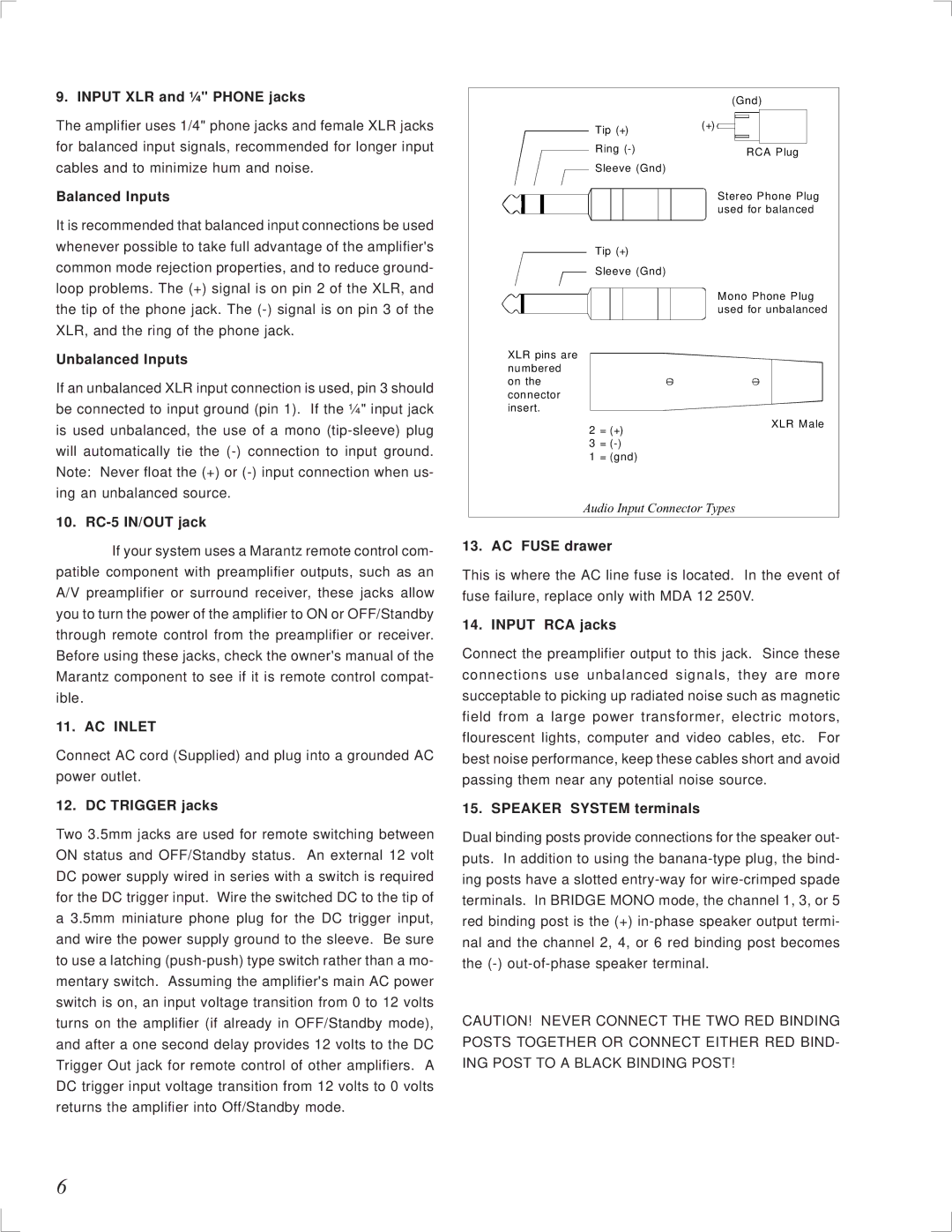MM9360 specifications
The Marantz MM9360 is a high-performance power amplifier designed to deliver exceptional audio fidelity to music enthusiasts and home theater aficionados alike. Built on the foundation of Marantz's legacy in high-end audio, the MM9360 brings together innovative technologies and meticulous craftsmanship, making it an ideal choice for those seeking to enhance their audio experience.One of the standout features of the MM9360 is its powerful output, capable of delivering 180 watts per channel into 8 ohms and 250 watts per channel into 4 ohms. This ensures that the amplifier can easily drive a wide range of speakers, from sensitive bookshelf models to larger floor-standing designs. The amplifier’s robustness allows it to handle dynamic musical passages without distortion, allowing listeners to enjoy their favorite tracks with clarity and impact.
The design of the MM9360 reflects Marantz's commitment to high-quality construction. It utilizes a fully discrete current feedback amplifier configuration, which minimizes feedback and distortion while enhancing transient response. This results in a natural sound characteristic that faithfully reproduces the original recording, making it a favorite among purists.
In terms of connectivity, the MM9360 is equipped with balanced XLR inputs as well as RCA inputs, offering flexibility for integration into various audio setups. The rear panel features sturdy binding posts to accommodate speaker connections securely. Additionally, the amplifier utilizes a sophisticated power supply, designed to handle peak demands efficiently and provide clean power to all connected components.
Another significant characteristic of the MM9360 is its low noise operation, achieved through careful component selection and layout. This attention to detail ensures that even the faintest nuances in a performance are not lost in unnecessary background noise, allowing listeners to fully immerse themselves in the audio experience.
The Marantz MM9360 also comes with a robust protection circuit that safeguards the unit and connected speakers from issues like overheating or short circuits. This feature adds an extra layer of reliability and peace of mind for users, allowing them to enjoy their music without worry.
In summary, the Marantz MM9360 is a powerful, versatile, and beautifully crafted amplifier that exemplifies the brand’s dedication to high-fidelity audio. Its combination of cutting-edge technologies, robust design, and sound engineering makes it an outstanding choice for any audio system, bringing the listener closer to the true essence of music. Whether used in a stereo setup or as part of a home theater, the MM9360 promises to elevate the listening experience to new heights.

